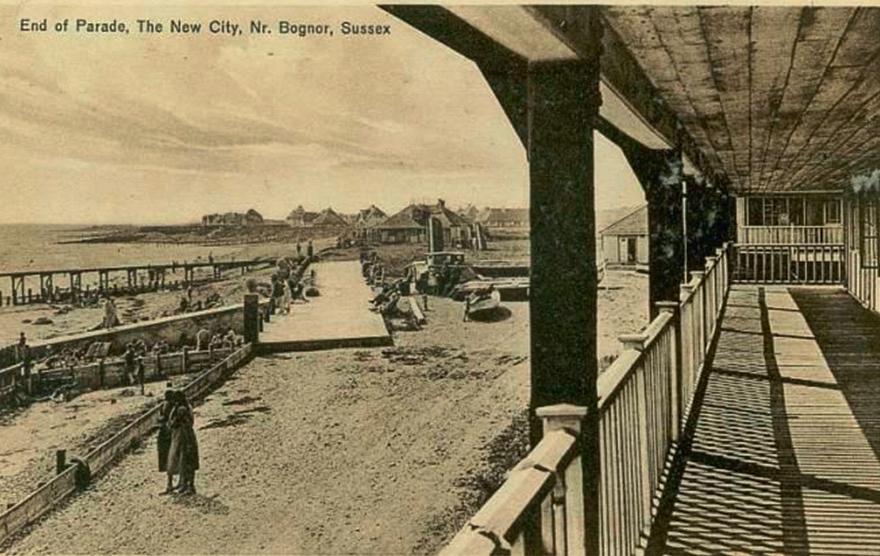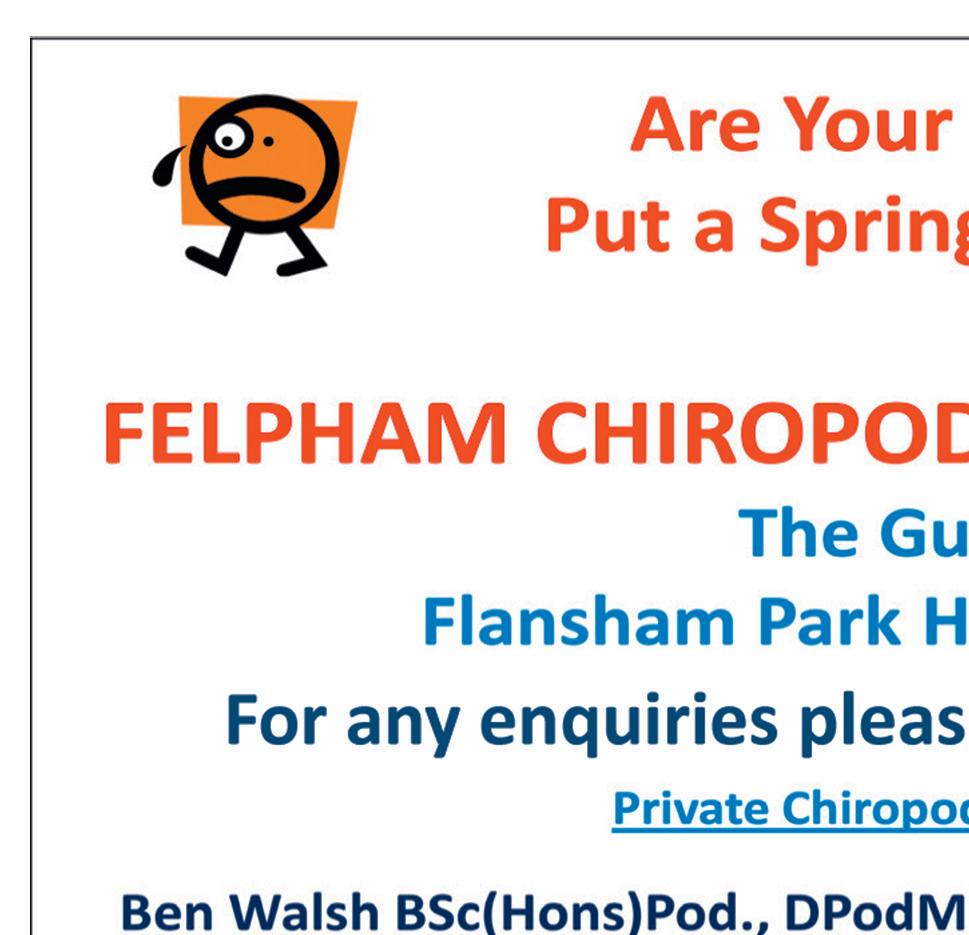
4 minute read
WALK AND CHALK
BY SIMON BAKER IRONS
With the seasons changing and early signs of spring upon us what better way to see these changes than with a walk, deep in the South Downs, that takes in some fantastic views and follows an environmental sculpture trail through woods adorned with Wild Daffodils. This linear 5-mile route starts at the Cocking Hill car park and finishes in West Dean opposite the gates of the college. In 2002, Environmental Sculpturer Andy Goldsworthy, placed a trail of fourteen very large chalk balls in the area. The chalk used apparently came from the nearby Duncton Quarry and was carved into massive balls approximately 2-3m in diameter. The balls have been designed to erode and crumble over time but twenty years on, they are still there, albeit some are disintegrating more than others. Some of the stones are becoming overgrown and are hard to find, which makes for a great extreme Easter egg hunt.
Advertisement
1. From the car park the walk follows the South Downs Way uphill to the west, as the path ascends, the view north across the Sussex weald to Blackdown Hill is worth admiring.
2. About ¾ mile along the South Downs Way can be found the 1st chalk stone. At this point bear left on the bridleway and head towards West Dean Woods, more Chalk boulders can be found along the paths as the route unfolds.
3. The path passes through woods called ‘New Farm Plantation’ which is named after a ruin of an old, isolated smallholding, which fell into disuse in the 1950’s. The ruins can be explored just off the path.
4. Approximately a ¼ mile on, the bridleway heads south deeper into West Dean Woods.
5. A small clearing at the fifth stone is where thousands of Wild Daffodils cover the woodland ground in spring, these little flowers dominate in areas of coppice or light shade and in a good flowering year can be seen as a blanket of yellow. Displays of violets, Primroses, Wood Anemone, Bluebell and Orchid can also be seen.
6. The Bridleway heads south from the clearing, venturing further into the reserve of West Dean Woods. At the side of the path is a perfect example of a coppiced fence, using the Hazel that would have been coppiced from these woods over hundreds of years.
7. The Bridleway eventually meets a road and half of the chalk stones should have now been seen that have dotted the route.
8. The road heads straight along an uphill climb before descending round a sharp bend.
9. Just past the c.1800 cottage known as double barn, leave the road on the bridleway and head uphill through more woodland. The path then descends towards the end of the trail at West Dean and the last chalk stone can be found on the banks of the disused railway. A short bus ride from West Dean will take you back up to the car park on Cocking Hill.
To see more photos and walks please follow me on Instagram @piertopiertrekking

Local History By Sylvia
ENDACOTT
As you are sat in the cold are you thinking of booking your next summer’s holiday? For a number of families this will mean a trip to the English seaside and bookings from visitors who wish to see what the area has to offer. When thinking of holiday resorts in this area many people tend to think only of Butlins. Over the years there have been many local destinations.
Just 100 years ago in the 1920’s Sir W. Blount was to purchase a redundant aircraft company and create the ‘New City,’ a holiday complex. The complex was advertised as being very luxurious and elaborate, with ballrooms, lawn tennis courts, motor sports on the sands, in addition to the swimming pool.

The complex opened on 1st May 1923, although it had been opened since 1922 to ascertain if it ‘took’ with people and met the tastes of the class of people for which it catered.
There was also the ‘New City Sports club’, within the complex, and the founder of this overall facility announced that his intention was to provide ‘plenty of everything for everyone’ and he hoped that ‘New City’ would be a record success.
The summer rates from September to March were ‘only £2.2s.0d.’ One feature was tennis on covered courts by day, which were then illuminated by night! What about this as an advertising angle: “The beautifully equipped dining hall, for 400 people, was splendidly decorated, and from its windows opening on to the sea, one can get not only the ozone, but a fine view of the Nab lighthouse?”
ARUN & CHICHESTER (AIR) ENTHUSIASTS SOCIETY
AirACES www.airaces.org.uk
Patrons – Sqn Ldr Richard (Dick) Kharegat RAF (Retd) – ex Vulcan, Victor, B52 Pilot Wg Cdr Robert (Bob) Prothero MRAeS, MIMgt, RAF (Retd) – ex Victor Pilot Monday 27th March 2023 - 1900 for 1930 hrs
‘RAF Reaper Force –Remote Warfare in the 21stCentury – Part 2’ presented byProf Peter Lee

One of the world’s leading experts on Remote Air Warfare, Professor Peter Lee, is returning to Air Aces to present a follow up to his first talk on the RAF Reaper Force. In part one, Peter described several of the practical aspects of RAF Reaper operations, based on his research and the resultant book, Reaper Force. This second talk will address two implications for remote air warfare and those who operate the RAF Reaper, based on subsequent research. The first is the psychological impact, especially moral injury, on those who conduct remote air operations. Looking forward, Peter explores some of the implications of incorporating artificial intelligence elements within future remotely piloted aircraft systems.
AirACES is an aviation talk society, providing its members with regular talks, given by experts in many different fields related to the world of aviation. The talks are held at the Chichester Park Hotel, Westhampnett Road, Chichester 7pm for 7.30 start. Members £5, visitors £7 and under 16s FREE. Doors open at 6.45 no pre-booking, no reserved seating For further information about AirACES, please see www.airaces.org.uk, or call David Batcock on 01243 823007.

















